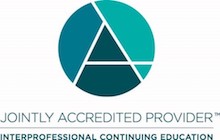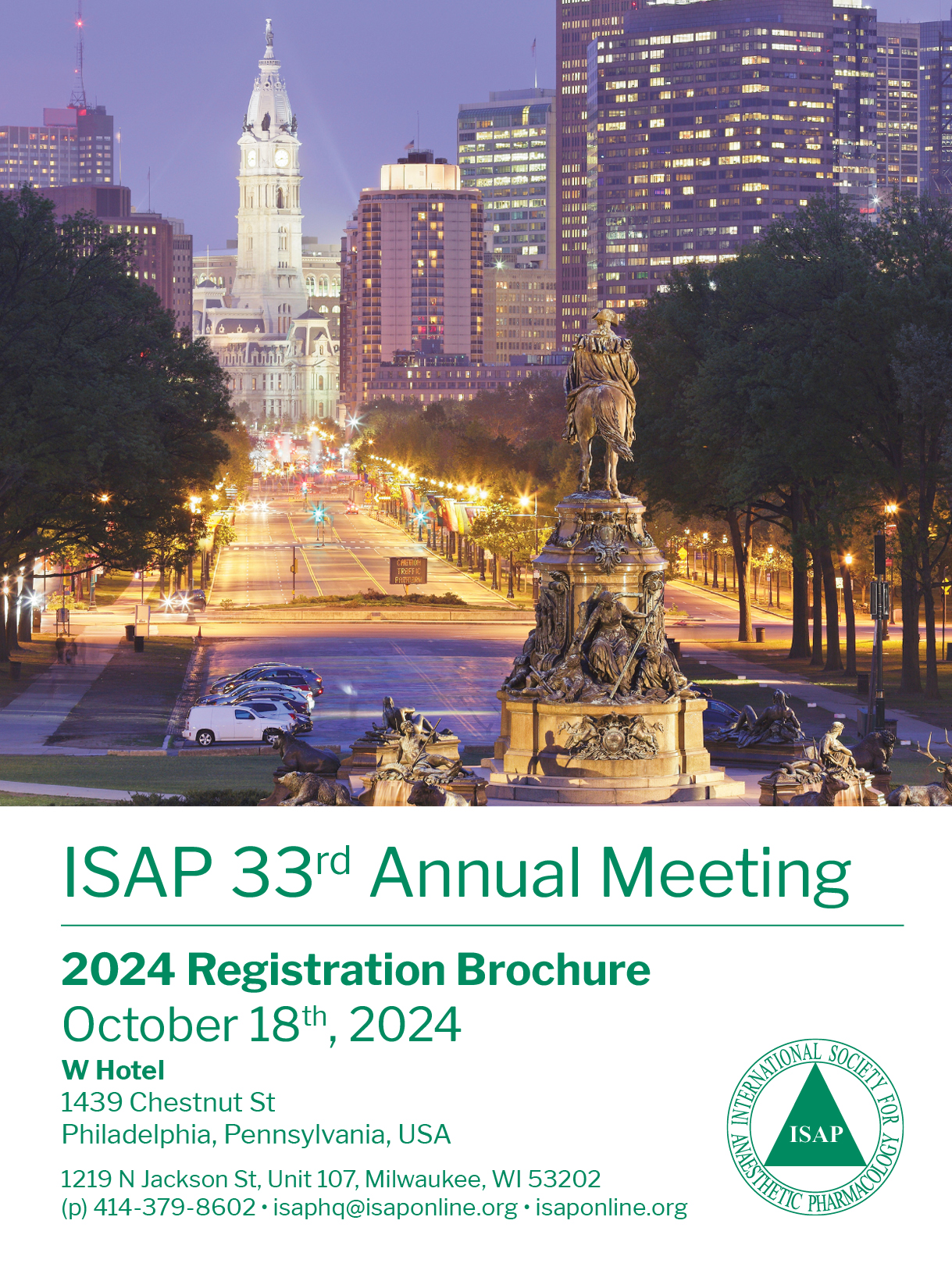33rd Annual Meeting Schedule
October 18, 2024 – Philadelphia, PA
0815–1700 US Eastern Time Zone
0815 – 0830 - ISAP Welcome/Announcements
Joseph Foss, MD
0830– 1000 - Session 1 – New Horizons in Clinical Pharmacology
MODERATOR: Amanda Kleiman, MD
0830 – 0900 - Taking over the reins at A&A: Challenges and Opportunities for Clinical Pharmacology, Jaideep J. Pandit, MA, BM, DPhil, FRCA, FFPMRCA, DM, MBA, Professor of Anaesthesia, University of Oxford & Editor-in-Chief, Anesthesia & Analgesia; Oxford, England, United Kingdom
0900 – 0930 - Recent Advances in pEEG Monitoring, Patrick L. Purdon, Ph.D; Professor of Anesthesiology, Perioperative and Pain Medicine; Professor of Bioengineering (by Courtesy); Member, Wu Tsai Neurosciences Institute, Stanford University, Stanford, CA, USA
0930 – 1000 - Pilot Findings of Pharmacogenomics in Perioperative Care: Initial Results from the First Phase of the ImPreSS Trial, Peter H. O’Donnell, MD, Associate Professor of Medicine; Chair, Committee on Clinical Pharmacology and Pharmacogenomics, The University of Chicago, Chicago, IL, USA
1000-1015 - Break
1015 – 1200 - Session 2 – Personalizing Anesthetic Delivery
MODERATOR: Ken Johnson, MD
1015 – 1045 - The Pros and Cons of Opioid Free Anesthesia, Girish P. Joshi, MBBS, MD, FFARCSI, FASA, SAMBA-F, Professor, Department of Anesthesiology and Pain Management, UT Southwestern Medical Center, Dallas, TX, USA
1045 – 1115 - The Opioid Paradox, Evan Kharasch, MD, PhD, Professor, Department of Anesthesiology, Duke University, Durham, NC, USA
1115 – 1145 - The SKOAP Study: A HEAL Initiative Trial Seeking to Improve Outcomes in Knee Osteoarthritis Pain, Carina Jackman, MD: Site PI SKOAP Study, University of Utah School of Medicine; Quality Improvement Officer, Division of Pain, Associate Professor, Department of Anesthesiology, University of Utah School of Medicine, Salt Lake City, UT, USA
1145-1200 Selective Nav1.8 Inhibitors for the Treatment of Pain
SandraLechner, PhD, Vide President-Pain Research, Vertex Pharmaceuticals, Inc. (non CME session)
1200-1245 - Luncheon – ISAP Business Meeting
1245 – 1330 - Mohamed Naguib Lecture
Carrying on What Dr. Naguib Started: Chemotherapy Induced Peripheral Neuropathy
Presenter: Daniel Rotroff, PhD, MSPH, Director, Center for Quantitative Metabolic Research, Cleveland Clinic, Cleveland, OH, USA
1330 – 1445 - Abstract Presentatiion Session
1445-1500 - Break
1500-1545 - Keynote Speaker & Lifetime Achievement Awardee
Following a Pharmacological Path from Molecules to Clinical Fruition: An Anesthesiologist's Journey
Mervyn Maze, MB, CHB, Professor in the Department of Anesthesia and Perioperative Care at the University of California San Francisco, San Francisco, CA, USA
1545 – 1700 - Gathering
CME Information
Program Target Audience: This program is designed for an international audience of general anesthesiologists, researchers, anesthesiologists with a special interest in clinical pharmacology and technology.
Objectives of the Program: After attending this program you should be able to:
1. Appreciate the immediate opportunities for the advancement of clinical pharmacology as well as potential threats.
2. Effectively recognize the use and utility of new and upcoming pharmacologic receptors including VX-548, a selective NaV1.8 channel blocker.
3. Understand the potential importance of pharmacogenomics in the delivery of effective perioperative care.
4. Consider the pros, cons, and nuances of the use of opioid-free analgesia in clinical practice.
5. Evaluate the best practices for analgesia for knee pain for the general populations and armed forces.
6. Comprehend the pharmacologic basis of chemotherapy-associated peripheral neuropathy.
7. Reflect on the contributions of outstanding clinical pharmacologists to perioperative care.
Practice Gaps
• Anesthesiologists require balanced information to understand and make decisions regarding the use of opioids for analgesia in the perioperative arena.
• Learning about the use of new selective receptors and pharmacogenomics in perioperative care allows for the expansion of therapeutic and research strategies.
• Understanding the best practices for the treatment of knee pain in a diverse and complex patient population helps to improve anesthetic practice.
Educational Needs
• Providing unbiased assessment and education for clinicians.
• Provide insight into future possibilities for improved clinical performance in anesthetic drug titration.
Joint Accreditation Statement

In support of improving patient care, this activity has been planned and implemented by Amedco LLCand International Society for Anaesthetic Pharmacology. Amedco LLC is jointly accredited by theAccreditation Council for Continuing Medical Education (ACCME), the Accreditation Council forPharmacy Education (ACPE), and the American Nurses Credentialing Center (ANCC), to providecontinuing education for the healthcare team.
Professions in scope for this activity are listed below.
Amedco Joint Accreditation Provider Number: 4008163
Physicians: Amedco LLC designates this live activity for a maximum of 4.50 AMA PRA Category 1 Credits ™ for physicians. Physicians should claim only the credit commensurate with the extent of their participation in the activity.


